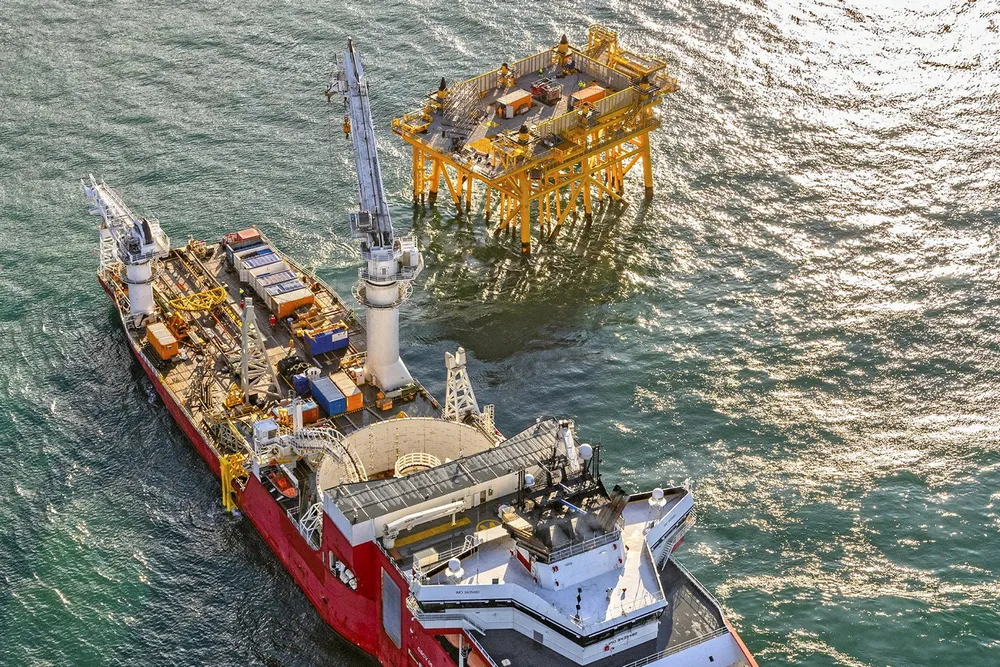'Compelling case' to link America and Europe via transatlantic power cable
Power demand and wind and solar generation spike at different times on both sides of the Atlantic, meaning that linking two continents could bring substantial benefits for energy transition, study says

Linking the European and North American electricity grids through a subsea interconnector would help both continents achieve a more secure and efficient energy transition due to the uncorrelated peaks in power demand and wind and solar generation, finds a new paper.
Interconnectors are integral to the energy transition as means of sending power where it is needed, when it is needed, a task all the more difficult with renewable energy due to the variable nature of wind and solar generation.
These projects are becoming increasingly ambitious, with plans underway to connect not just neighbouring countries but neighbouring continents through underwater cables stretching thousands of kilometres.
A new paper from UK energy think tank Ember explores what would perhaps be the world’s most expensive, ambitious and complicated interconnector project yet – connecting the European and North American power grids.
The first is that the six-hour time difference between major US and Canadian cities such as New York, Boston and Montreal and Western Europe (or five hours in the case of the UK, Ireland and Portugal) means power demand on each side of the Atlantic spikes at different times.
This provides “hourly complementarity” for solar generation and electricity demand on both sides of the Atlantic. When the sun reaches its zenith in Western Europe and power generation peaks, electricity usage in the region is relatively low.
But on North America’s east coast, it's when people are waking up and making breakfast, causing power demand to peak, meaning it would make sense to send power from Europe to the US and Canada.
Mid-day in the US, the country will have excess green output from solar that could be sent to Europe to help power homes in the evening when people come home from work and start making dinner.
It is not just solar generation and power demand that are largely uncorrelated. This is also true of wind, which accounts for a greater share of green power generation in countries including the UK and Ireland.
A decade of wind data for three pairs of geographical points from Europe and North America confirmed an “overall hourly correlation of near-zero,” found Ember. The analysis also shows there is evidence of a negative correlation for the windiest days on each side of the Atlantic – “i.e. when it is very windy in one location, it will tend to be less windy in the other”.
“This could be a powerful case for interconnection,” said Ember, “since the value of smoothing out the windy days could be expected to be high.”
This asymmetry could be down to the way low pressure systems develop in North America and then sweep over several days towards Europe, creating a partial asymmetry in wind speeds, said Ember.
Even hydropower benefits from a similar asymmetrical pattern, found Ember, with rainfall data from Québec and Switzerland over the last 20 years seeming to show “little correlation.”
Ember said that connecting the two continents’ grids would make both grids more secure by reducing price spikes when there is too little green power and curtailment of assets – an increasing problem for the sector – when there is too much.
While the paper does not investigate the feasibility of such an interconnector, it notes that the distances involved – 3,200km between St John’s, Newfoundland and Cork in Ireland, or 4,800km between Bristol in the UK and Québec – are comparable to other current projects.
Those projects – projected to cost between $20bn-$30bn – also indicate the possible cost of a transatlantic cable.
It remains to be seen whether the huge cost of building such a cable would be outweighed by the financial benefits of linking the European and North American power grids, said Jones.
Such a project would also depend on politicians' desire to make it happen as, “regardless of the cost, it would need political support.”
“What this paper says is that it's worth policymakers taking some time to look into this further.”